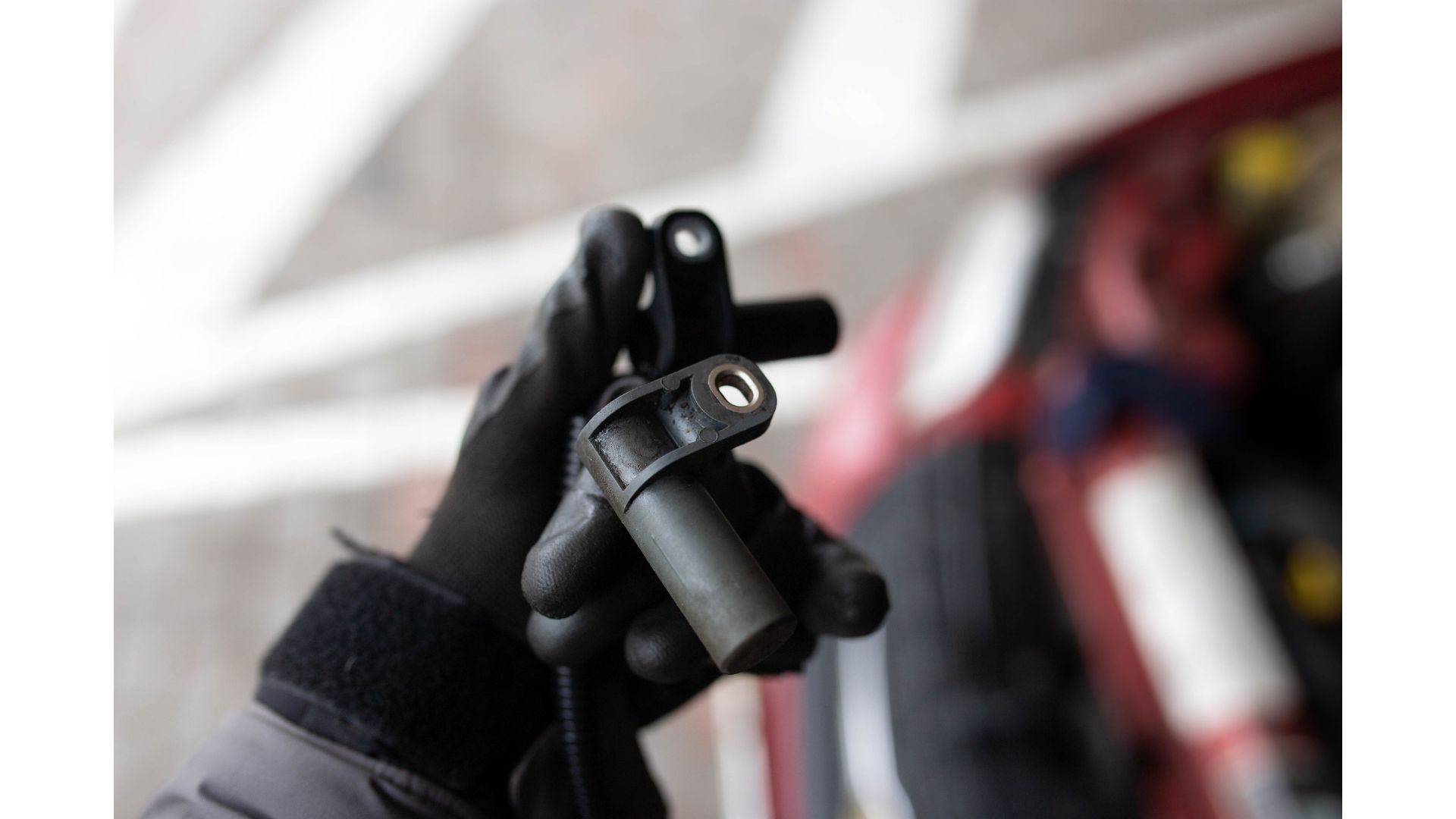Mechanic Base thinks you can clean the crankshaft position sensor. However, they want you to apply caution because you can damage the device by mishandling it. Additionally, cleaning the sensor may not necessarily solve your problem.
But is that true? You can’t answer that question if you don’t know what the crankshaft position sensor is, what it does, and why it gets dirty. Consider the following:
What Is A Crankshaft Position Sensor?
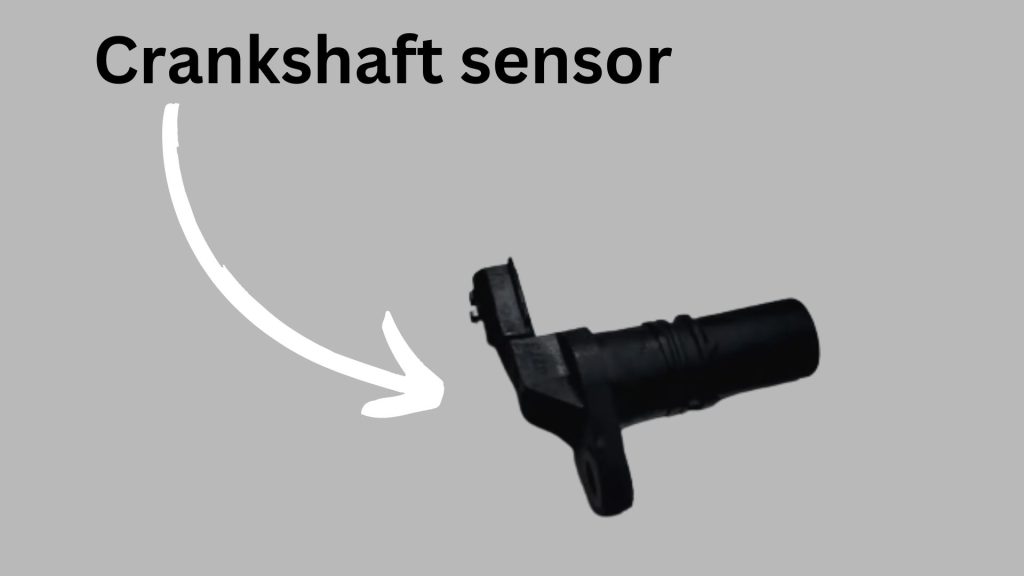
Most cars have this sensor. The component measures the crankshaft’s precise position and rotation speed, sending the information it tracks to the engine management system. The engine management system uses that data to manage vital operations such as fuel injection and ignition system timing. The car cannot run in the absence of a crankshaft position sensor.
Where Is The Crankshaft Position Sensor Found?
It depends on the car. Check the transmission bell housing. If you can’t see it, look in the engine cylinder block. The experts at Samarins have published a photo of a sensor in a Ford. The component is near the main pulley.
The manual will tell you where to look. If the document doesn’t mention the crankshaft position sensor, look for ‘CKP.’ ‘CKP’ is an abbreviation for ‘Crankshaft Position Sensor.’
Why Does The Crankshaft Position Sensor Get Dirty?
Like most engine parts, you expect to find a certain amount of oil on the sensor. But the debris is a bigger concern, specifically metal filings, and shavings. The CKP is magnetic. Therefore, it collects steel shavings all the time.
While you can wipe these shavings off with a rag, an extensive collection of shavings should concern you. It points to significant damage in or around the engine’s metal parts, hence all the metal shavings and filings.
The debris matters because the sensor needs a specific distance to do its work. The air gap from the reluctor ring is important. The metal shavings and filings can disrupt the signal by closing that gap.
Don’t Confuse Yourself With Crankshaft And Camshaft Position Sensor

Don’t confuse the crankshaft position sensor with the camshaft position sensor. This occurrence is more common than you think. The author of this Reddit Post was looking for a way to clean the crankshaft position sensor connector, only to realize later that the camshaft connector was the culprit.
These two devices have a lot in common. In a way, they perform a similar role. However, their differences are significant and include the following:
- The camshaft position sensor tracks the position of the camshaft as opposed to the crankshaft.
- You find the camshaft sensor near the camshaft.
- The camshaft sensor works with a reluctor/slotted wheel on the camshaft. The crankshaft sensor works with a reluctor/slotted wheel on the crankshaft.
- The crankshaft sensor works at double the camshaft sensor’s speed.
- You get a maximum of four camshaft position sensors. On the other hand, the engine uses two crankshaft sensors.
- The camshaft sensor is susceptible to wear, tear, and water damage, while the crankshaft sensor typically fails because of overheating and electrical complications.
You don’t want to diagnose the wrong part. Your problems will persist if you clean the camshaft position sensor because you confused it for the crankshaft sensor.
How To Know When Crankshaft Position Sensor Needs Cleaning?
A bad crankshaft position sensor will warn you by manifesting various troubling symptoms, such as the following:
- The car will cut out randomly, only to restart later on without issue. The engine may also refuse to start on cold or rainy mornings.
- The RPM gauge will become erratic.
- The engine will crank but refuse to start.
- The engine may vibrate because the PCM has failed to manage the crankshaft adequately.
- The ‘Check Engine’ light will come on and stay on because the sensor keeps sending inaccurate information.
- The engine’s performance will deteriorate. You will notice moments where the car appears to hesitate after you step on the gas pedal. The vehicle may even refuse to respond.
- Expect misfiring in the chamber cylinders.
- Your car will use more gas than usual, even on short drives. This is because the sensor’s operations influence the fuel injectors. A faulty sensor can prevent the fuel injectors from pumping gas efficiently.
Admittedly, you can’t blame all these symptoms on a dirty crankshaft position sensor. The CKP can fail for other reasons, including:
- The engine creates a hot and volatile environment. That heat can easily melt the sensor’s plastic cover.
- The heat and vibrations from the engine can damage the wires, expedite wear and tear, and create loose connections. This can create disruptions in the sensor’s performance.
- The reluctor ring can sustain damage.
- The sensor wires can short out after rubbing against the engine’s metal components, leading to intermittent stalling.
There’s little point in cleaning a crankshaft position sensor that has sustained significant damage. Cleaning won’t fix the problem. You can confirm your suspicions by testing the sensor with a multimeter:
1). Locate the crankshaft sensor. Again, the manual can help you here.
3). Disconnect the sensor. Sometimes, this means removing one or more bolts. In other cases, you can unplug the component with relative ease.
4). Connect wires to the Crankshaft sensor and attach the multimeter leads to it.
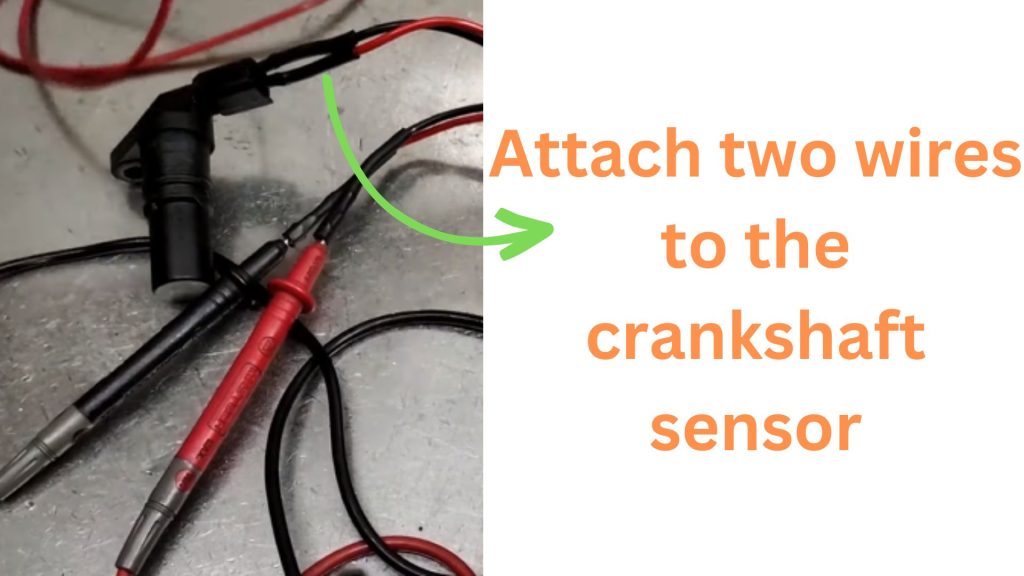
4). The initial reading in the multimer has to be ‘0’. This proves that the multimeter is working
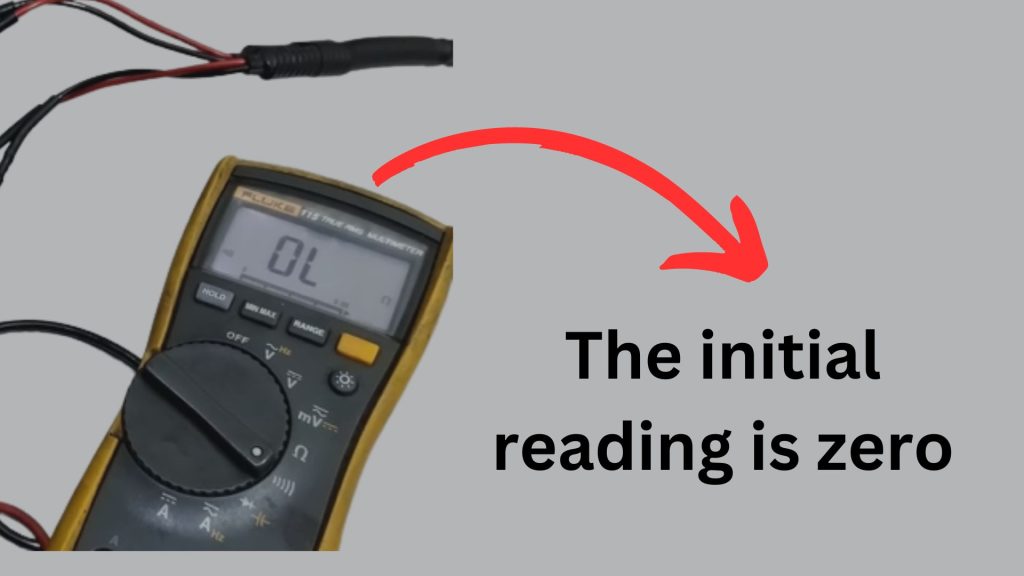
5). Set the multimeter to ohms. Put a metal object on top of the crankshaft position sensor. It fluctuates the reading meaning that the crankshaft position sensor is working.
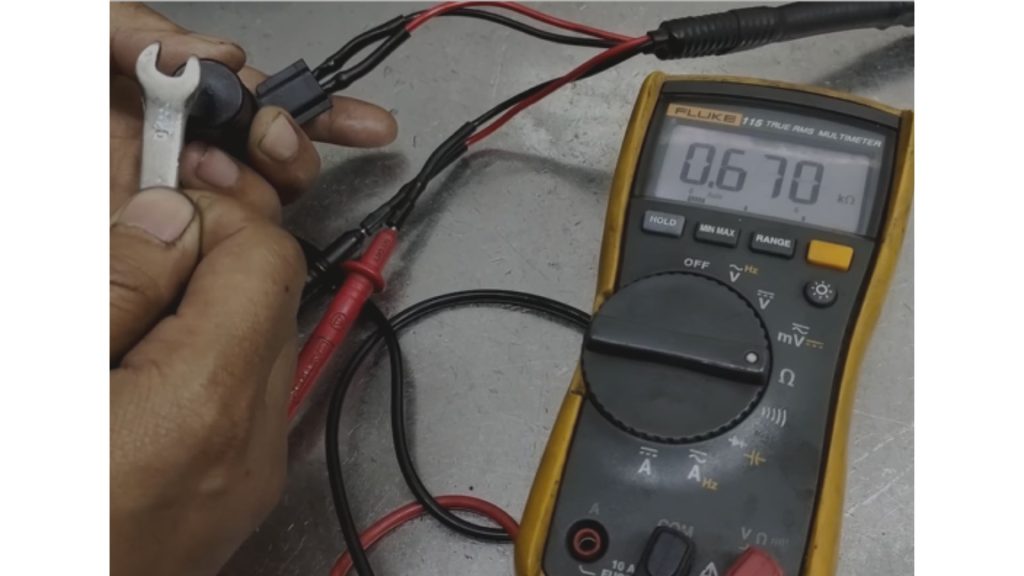
Don’t forget to consult the manual. It will tell you the voltage and resistance to expect when you perform a multimeter test. Testing with a multimeter will tell you whether the sensor requires cleaning or replacement.
What To Use To Clean Crankshaft Sensor?
- Specialized electronic parts cleaner spray
- 90 percent+ pure isopropyl alcohol.
- Dry rag.
- Soft bristle brush.
- Water.
- Compressed air.
- Contact cleaner.
How To Clean Crankshaft Position Sensor?
- Use a fine paintbrush to remove dirt and debris. You can dip that brush in isopropyl or warm water. Brush the sensor gently to prevent unnecessary damage.
- Use compressed air to blow dirt and debris out of the sensor. The setting matters. Again, you don’t want to damage the sensor by going too far.
- Get a silicone spray and apply it to the sensor before scrubbing gently with a brush.
- Don’t ignore the crankshaft position sensor port hole. Spray it with a cleaner.
Again, it should be noted that cleaning the sensor won’t solve every problem. Sometimes, the only solution is to replace the sensor. A new part could cost you as much as $120. That doesn’t include the labor fees.
Mistakes To Avoid While Cleaning A Crankshaft Position Sensor
- Stay away from harsh chemicals.
- Avoid abrasive cleaning materials. There’s a reason why experts emphasize brushes with soft bristles.
- Don’t use pressurized water. You may assume the water can’t cause external damage, but what if it enters the sensor and harms the internal parts? Don’t take any chances.
- Don’t use steel wool or wire brushes.
If all else fails, go to a mechanic. Some sensors have so much dirt and grime that no amount of scrubbing will clean them. But what do you do when the car refuses to start? How can you get the vehicle to a mechanic? The following steps will start the car despite the defective sensor:
- Find the crankshaft position sensor.
- Unplug the sensor.
- Spray the mount’s opening with starter oil.
- Locate the throttle body, remove the cap, and sprinkle some starter fluid.
Executing these steps correctly may allow the engine to ignite, letting you drive to a mechanic. If the car doesn’t start, check the fuel and oil levels. You should also search the system for loose wires and connections. In some cases, tightening these connections is enough to start the car. But even if the vehicle starts, you should take it to a mechanic for further diagnosis.

